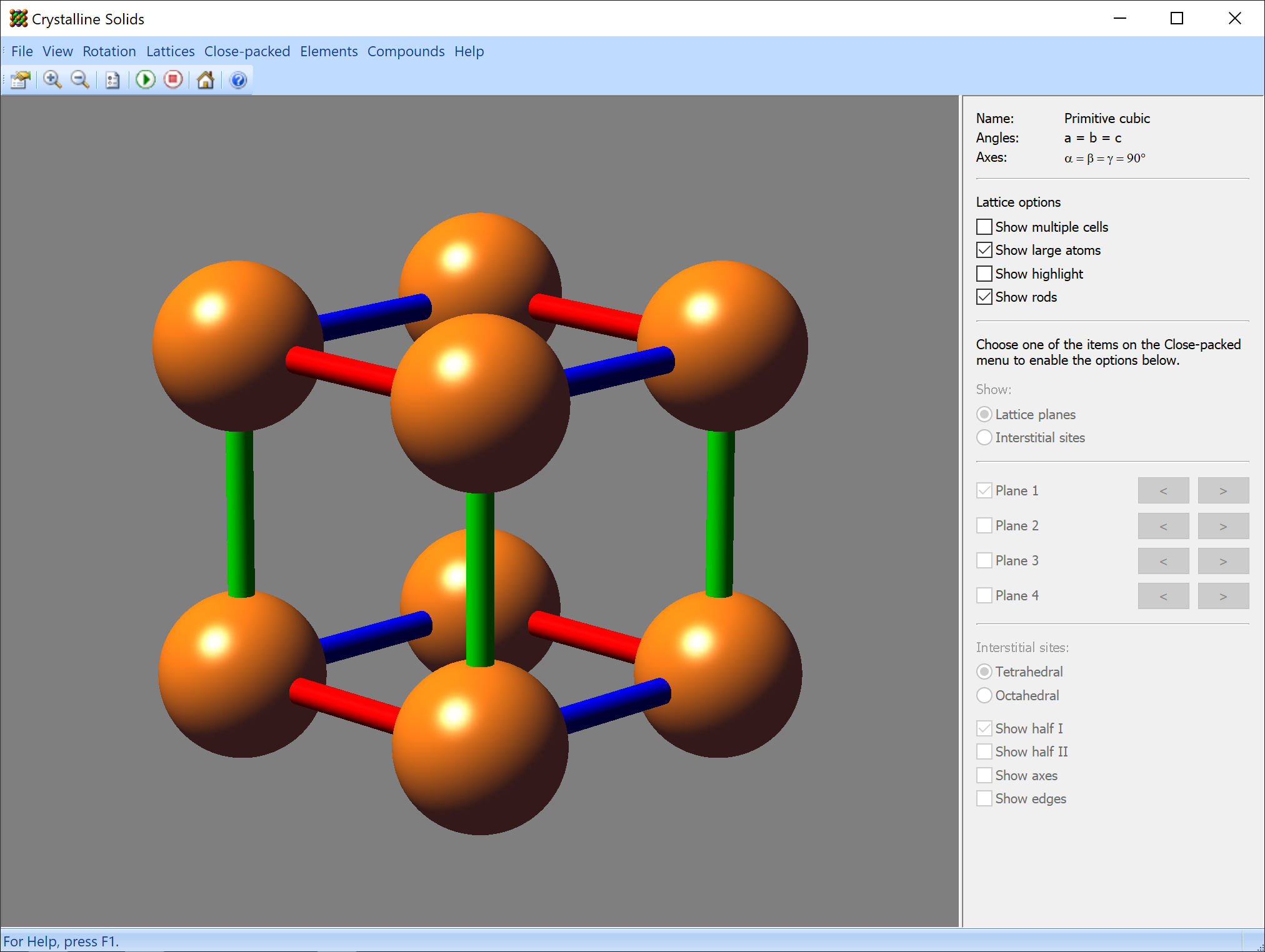Crystalline Solids

Visualizing three-dimensional structures is a major hurdle for chemistry students. Many
molecular modeling programs have been designed to assist visualizing organic structures;
fewer exist for crystalline compounds.
Crystalline Solids attempts to meet that need. The program provides easily manipulated
three-dimensional models of fundamental crystal structures. Students can turn and rotate
either single or multiple unit cells of any of the fourteen Bravis lattice structures.
They can toggle between structures where the atoms are represented by small spheres,
similar to ball-and-stick models, or large spheres, which simulate the space-filling
nature of the atoms in a crystal.
Close-packed cubic and hexagonal structures provide the additional features of studying
interstitial sites/holes, or close-packed planes and slip planes. Students can place atoms
in small or medium sites and turn on or off the axes between the atom in the site and its
nearest neighbors, or the edges of the tetrahedron or the octahedron formed by these
nearest neighbours. Visualizing packing patterns is simplified by highlighting sequential
close-packed planes or slip planes.
Setup program
Crystalline Solids requires a computer running the Microsoft Windows 8,
Windows 10, Windows 11, or later Windows operating system.